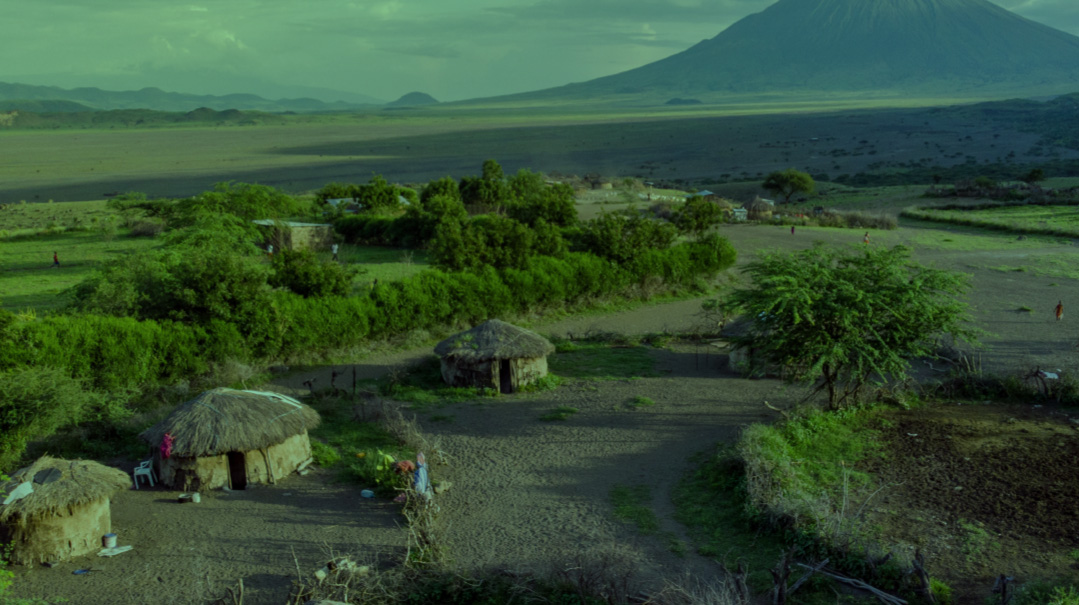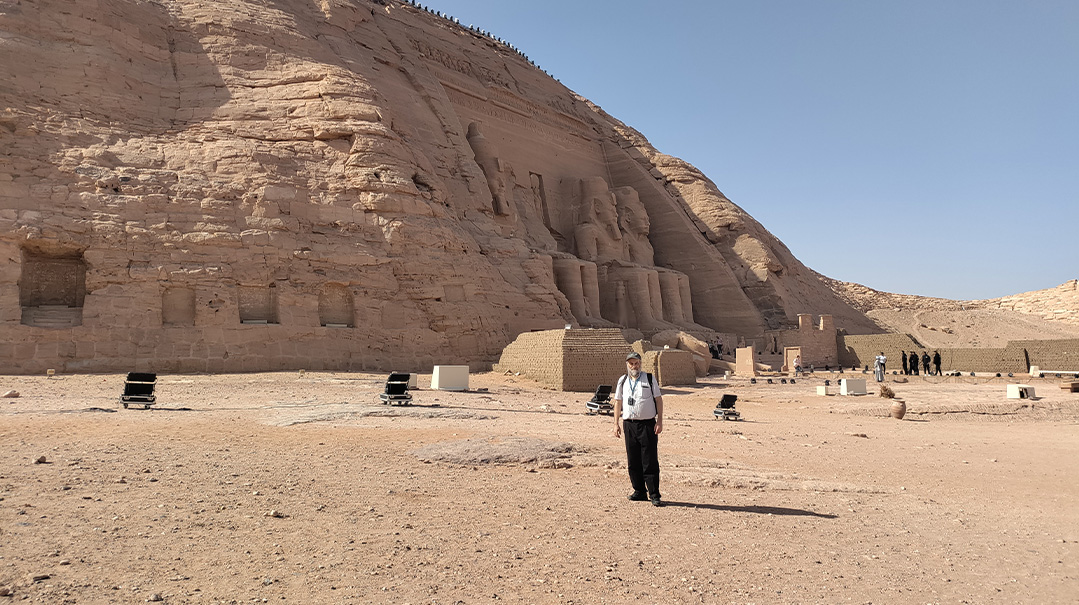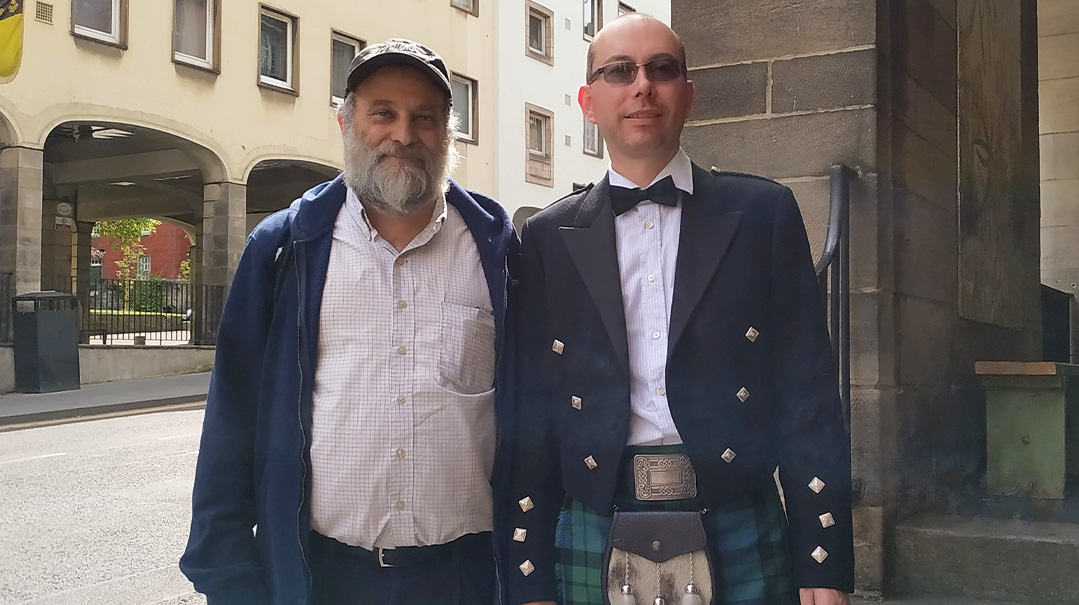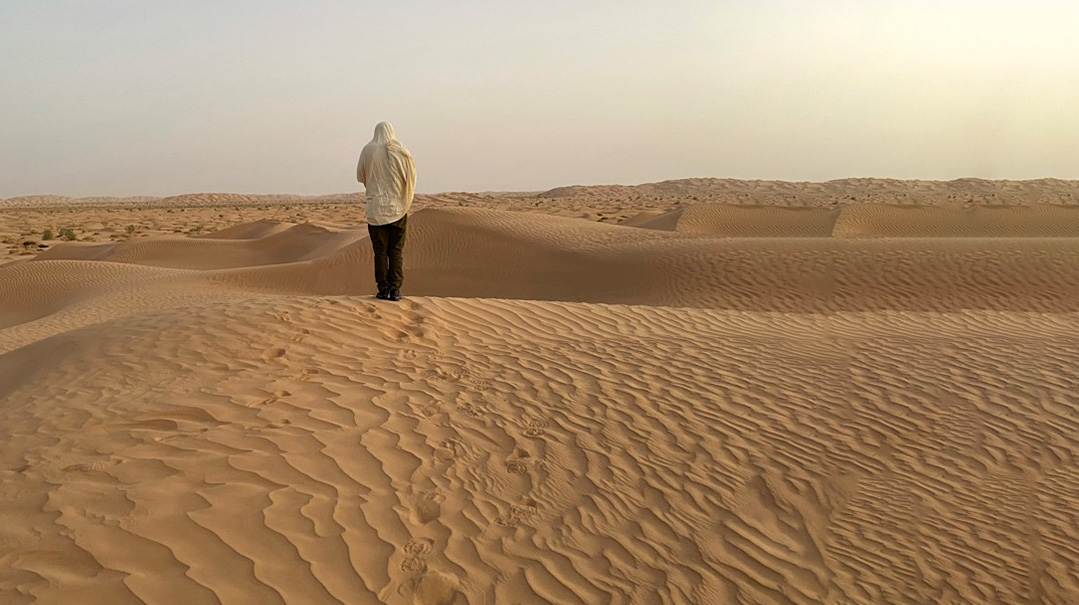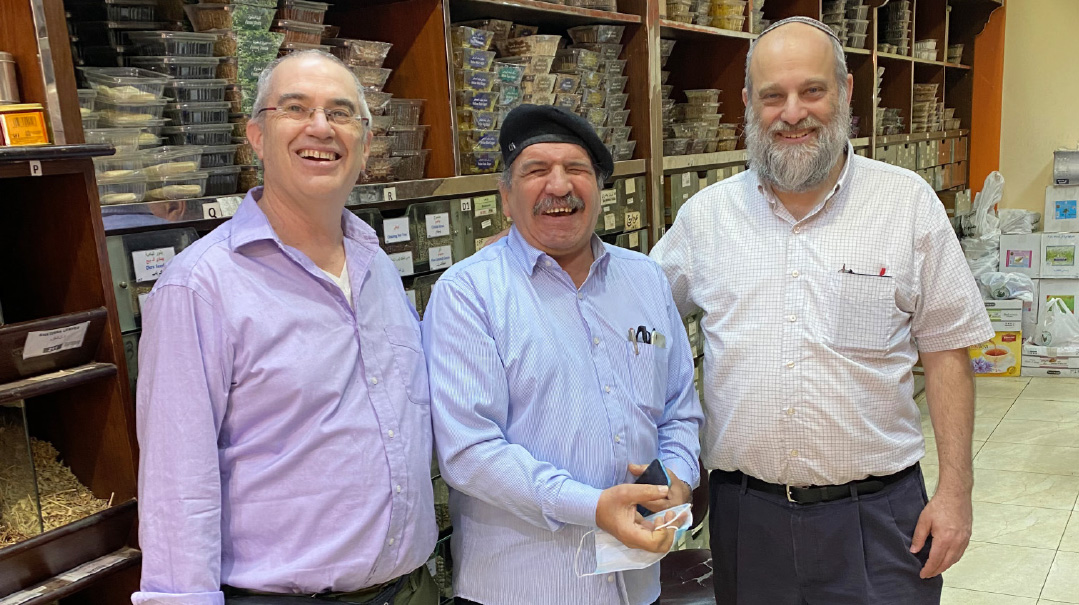One Tribe Lost and Found
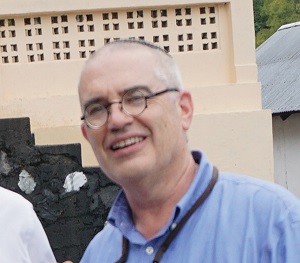
High on isolated Indian cliffs, the Bnei Menashe are almost living Jewish
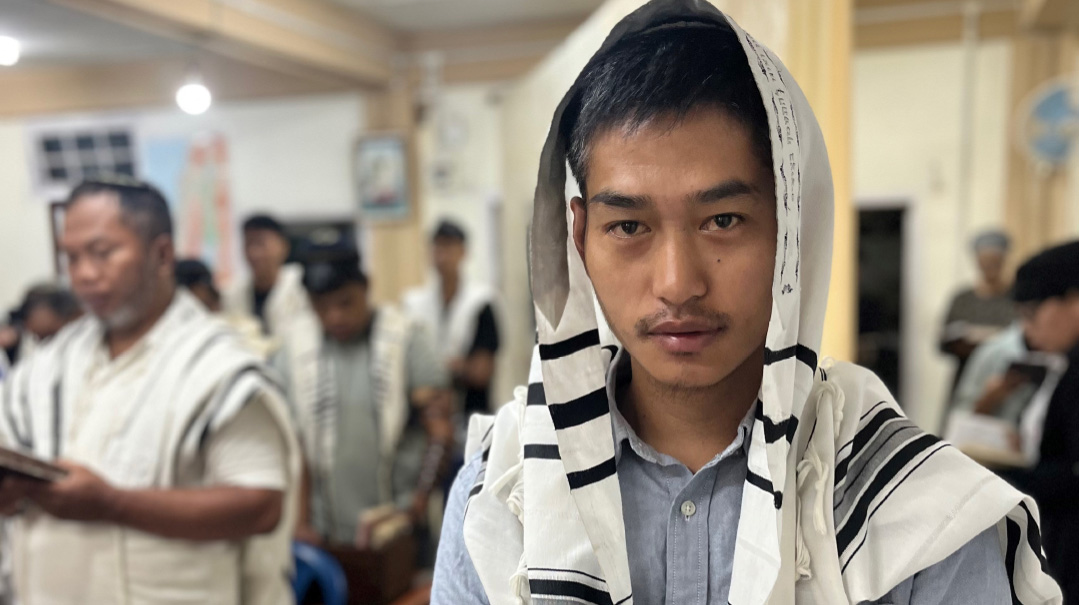
Photos: Ari Greenspan
IT wasn’t the first time I’d met the Bnei Menashe tribe in their native northeast Indian land, but when the opportunity came to do a mitzvah for an affiliated member, I knew the chance might not return. I discovered young boys in yarmulkes and tzitzis, men devotedly going to shul each morning for a 90-minute Shacharis, women in modest dress running their homes according to halachah — and all that when they’re not officially Jewish. Is this a Lost Tribe on its way back?
It wasn’t the first time we’d traveled to the backwaters of northeast India to examine the ancient communities claiming a connection to Lost Tribes of Israel. A few years back, Ari Zivotofsky and I paid a visit to several of the far-flung Bnei Menashe communities in the state of Manipur — with their tzitzis and yarmulke-clad young village men — near the Indian-Burmese border.
But when our friend Rabbi Eliyahu Birnbaum of Israel’s chief rabbinate asked me to travel with him to India to do a mitzvah, I couldn’t turn down the opportunity: I was to act as the shaliach to deliver a get to a Jewish woman of the Bnei Menashe tribe who was languishing in an Indian prison. Never one to put off doing a mitzvah (especially if there’s an adventure involved), it was also a chance to revisit these unusual communities — this time in the adjacent state of Mizoram — and see how they’ve been faring, especially as the region has been racked by civil war.
While many readers have surely come across halachic Bnei Menashe converts in Israel — the men in yarmulkes and the women in headscarves — seeing their ancient communities on the ground — before aliyah and conversion by the Israeli Chief Rabbinate — is always special and edifying.
I had planned to combine the trip with Simchas Torah, to observe how the Bnei Menashe observe the holiday. Not having been visited by a religious teacher for almost five years, the community was ecstatic when our little group arrived, especially after learning that I had brought milah equipment with me when I heard about a one-month-old baby who needed a bris. Welcome to the Bnei Menashe, the “almost” Jews of Mizoram.
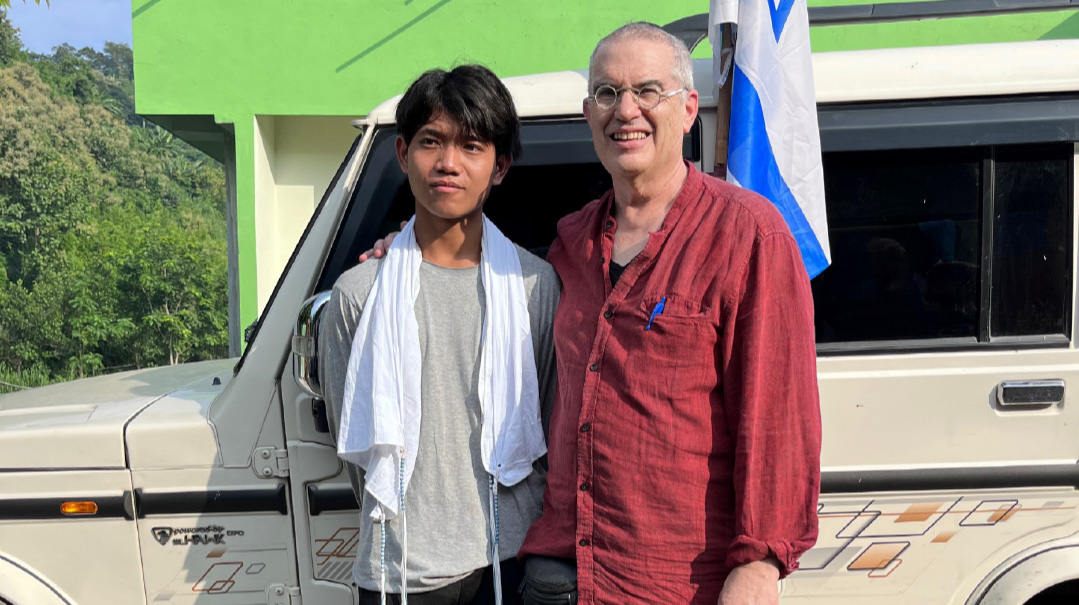
A Direct Link?
Just looking at the Bnei Menashe, you can tell they are not ethnically Indian but part of a large Asian tribe in northern India known as the Shinlung. The community of about 10,000, spread out between the states of Mizoram and Manipur along the border with Burma and Bangladesh, claim to have ancient Jewish customs and trace their lineage to their patriarch Menashe, son of Yosef ben Yaakov Avinu. Theirs is a story spanning thousands of years of Jewish history, perhaps being a direct link with our Biblical past while raising interesting halachic and philosophic conundrums about their future.
The Bnei Menashe have no written history, but their oral tradition tells of their ancestor “Menasia,” who is understood to be Menashe, patriarch of the tribe that settled on both banks of the Jordan River. But they, together with the other tribes of the biblical Northern Kingdom who were defeated by the Assyrians 130 years before the destruction of the First Beis Hamikdash close to 3,000 years ago, were exiled as part of the dispersion of the Ten Tribes. What happened to them, where did they go, and are they lost forever? Our trips to India have provided some tentative answers, but have raised many questions as well.
The Bible tells us of the lands of dispersion of the tribes by Tilgath-Pilneser, king of Assyria; the Gemara (Sanhedrin 94a) attempts to identify these locations and suggests either Africa or the mountains of Afghanistan, and for the next millennia, commentaries have weighed in. Nineteenth-century Polish Acharon Rav Yisrael Lipschitz (Yachin on Sanhedrin 10:3) describes the Lost Tribes as being scattered in India and Abyssinia, present day Ethiopia.
The communal history of the Bnei Menashe recounts how, after being exiled and enslaved by the Assyrians, they escaped, pushing eastward through Afghanistan into Tibet, and then to central and southern China where for many centuries they lived in relative peace and maintained a form of Jewish practice. At some point they began to be oppressed, ultimately fleeing central China where they hid in caves (and thus are called the “Shinlung” or “cave-dwellers”) and eventually moved to present-day Burma and India. In the 1800s, some of them moved on to Manipur and Mizoram in eastern India, where they still live today.
In the ensuing years though, Christian missionaries overwhelmed the area, making it difficult for the Bnei Menashe to maintain Jewish identity. On the other hand, when the missionaries reintroduced them to the Bible at the end of the 19th century, the Bnei Menashe noticed parallels between ancient Jewish customs and their oral traditions, reinforcing their historical legend of being of Jewish origin. Some of these customs included animal sacrifices, family purity laws, yibum, burial of the dead, draining the blood from an animal before eating it, and not traveling out of their domain on Shabbos.
In the 1970s, when they finally became aware that there were other Jewish communities in India, some tried to send their children to Jewish schools in Bombay.
The return of the Bnei Menashe began in earnest in 1979 when they wrote a letter to Rabbi Eliyahu Avichail a”h, who headed an organization that assisted Jews in far-flung lands in his quest to find the Lost Ten Tribes. The Bnei Menashe (the name given to the tribe by Rabbi Avichail) had already begun taking on some mainstream Jewish practices such as reinstituting bris milah and educating themselves about traditional Judaism, although most of them had yet to actually meet a Jew. The following year, Rabbi Avichail assisted two Bnei Menashe teenagers to study in Israel, and in 1981, the first Bnei Menashe from Manipur halachically converted and made aliyah.
Rabbi Avichail introduced normative Jewish concepts to the tribe, and — although not halachically Jewish — the community slowly moved their practices toward halachic Judaism. In 2005, then-Chief Rabbi Shlomo Amar recognized the Bnei Menashe as part of “zera Yisrael,” people with Jewish ancestry who are not halachically Jewish. In fact, it was my travel partner Rabbi Birnbaum who set up their Jewish educational system that is still in place, giving them a framework for religious practice that will enable Orthodox conversion. In accordance with national Indian policy, no conversions take place in India’s sovereign territory, but instead are done by the Rabbanut once the candidates make aliyah.
Although there is no conversion in India, the process still helps facilitate aliyah for those who want it, although the Bnei Menashe must undergo a stringent vetting followed by a halachic conversion once in Israel. Today, there are close to 6,000 Bnei Menashe living in Israel — most of them in towns such as Kiryat Arba, Beit El, Ofra, and other communities in the Shomron (many early olim were settled in Gush Katif before the Disengagement in 2005) — having left their brothers in Manipur and Mizoram in order to live as authentic Torah-observant Jews.
Despite the fact that several DNA testing investigations over the past decade failed to show any link to Middle Eastern ancestors, a selection of rituals they’d kept for centuries strongly hints to some Jewish connection. One of those is a death ritual, in which, upon burial, an ancient chant was recited, calling on the deceased’s ancestors to aid in the passage of his soul to the Next World. The list of these ancestors was long, but it always began with “Manmasi” (Menashe), “Gelet” (Gilad, Menashe’s son), and Ulam (Gilad’s son).
Another is reminiscent of Pesach. Once a year, on the night of a full moon in springtime, there was a sacred day on which a special yeast-free bread was prepared from rice flour and eaten at a communal village meal.
The Bnei Menashe also have an ancient song called “the Great Hymn,” dating centuries before the Christian missionaries came and exposed them to the Bible:
While we prepared for the famous big winter feast,
I tell O! of the parting of the lurking big water.
My enemies from the time of Terah, O!
Like clouds in the daytime, like a fire that goes by night.
O how great and determined was their cruelty in coming to fight!
All the mortals were swallowed by the lurking big water as though devoured by beasts.
All of you, take the birds,
Take the water that gushes out on the big rock.
This song seems to detail Am Yisrael’s crossing of the Red Sea: The enemy chasing Am Yisrael, the splitting of the sea, the cloud by day and fire by night, the drowned enemies, the quail on the ground for the taking, the thirst-slaking water flowing from a rock….
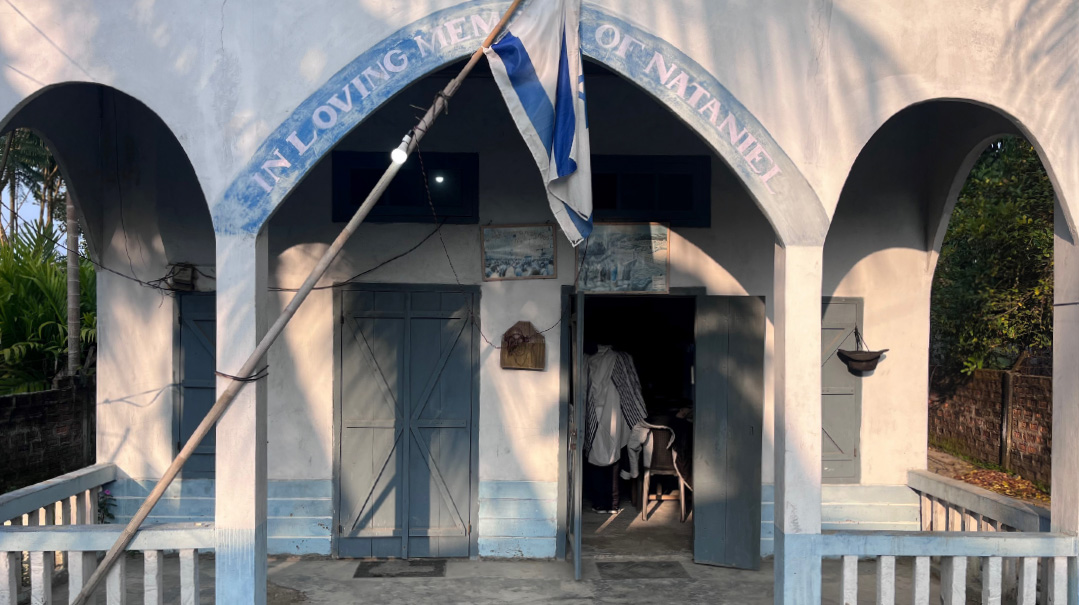
Even the Minor Details
Aizawl, the capitol of Mizoram, is in the very steep hills of northern India. I could not imagine how we would find a landing strip with the precipitous mountains everywhere. Landing at the provincial airport meant flying very low into a narrow pass between two mountains and dropping down like a stone onto a short landing strip on a small flat clearing. (It was more than a little unnerving to see an old airplane that didn’t make the landing, dented and rusting in a ditch at the side of the runway.) Every house is built on the side of sheer hills on pillars, and each one looks like it could slide off the mountainside in a second. The Bnei Menashe shul in Aizawl, called Chovevei Zion, is on a narrow dusty street with unadorned cement buildings and down a dozen stairs. On one side it is below street level and on the other side it’s on the fourth floor of the building.
The first thing we did upon arrival was to daven Minchah. Ori, the chazzan/teacher, ran the service perfectly. The floor-to-ceiling mechitzah hid the women, many of whom come to all the tefillos, including Maariv. They are pious and try their hardest to emulate what they have been taught by rabbis over the last 30-40 years.
At the entrance to the shul are pictures from the 1980s of Rabbi Avichail visiting them as well as the group of dayanim (including Rabbi Birnbaum) sent by Chief Rabbi Amar 20 years later. Next to the pictures is a sign with all of the times of weekday and Shabbos davening.
While the community members of Bnei Menashe are not yet halachically Jewish, they are makpid on an Orthodox lifestyle, and are surprisingly well-versed in even minor details of halachah and minhag. Since they are not halachically Jewish, they know they are not allowed to cook anything for a Jew without the stove being turned on by a Jew. For my part, I did okay eating fish, rice, and vegetables, but every time they wanted to cook for me, they preempted me by handing me the matches to light the stove. They have siddurim printed in their native Mizo language with a translation. One man who saw my tallis said that the way the tzitzis were tied was different than his. He was so knowledgeable that he was able to tell me mine were tied according to the opinion of the Rambam, the way the Yemenites tie their tzitzis.
On the first evening, we drove harrowing roads for an hour to arrive at congregation Rodef Shalom, a community of 57 members, all related to each other. The shul is a small building on stilts up many stairs on the side of another steep mountain, and there was even a kosher succah.
Keeping Shabbos poses a great difficulty for them, as many of them are simple laborers and the standard work week is six days, with Sunday off. Not working on Shabbos means the Christians often will not hire them at all. Not working means they have no food or home to call their own. While some Bnei Menashe have succumbed to the temptation of working on Shabbos, I met one man in his 30s — an orphan whose parents died when he was young — who has no job because of keeping Shabbos. He lives in a tin room in a building site.
I felt my goal was to provide them guidance, support, and succor, no matter what they chose to do. One caveat regarding the Bnei Menashe, they are and remain overwhelmingly religious after they make aliyah and go through an official conversion — which means something in their pre-conversion education is being done right.

Improvised Wine
As Yom Tov was arriving in a few hours, I asked Azriel, the leader, about kosher wine. He was surprised and asked, “You didn’t bring wine for yourself?” It was one thing I didn’t think of. Since they are not halachically Jewish and no kosher wine exists in northern India, they use a local grape juice, although for me that was forbidden.
I thought back to one of our earliest halachic adventures in the 1980s, when we traveled to visit the persecuted refuseniks of Communist Russia. The refuseniks — called as such because they had been refused consent to emigrate to Israel — were fired from their jobs, thereby being guilty of the offense of “parasitism.” The Russian government made their lives impossible, and many became religious in the midst of their struggle. Since they did not have kosher wine or fresh grapes, they learned to make their own grape juice by boiling raisins in water. That all came back to me as I found myself facing a Yom Tov without wine for Kiddush. I told my hosts to find me raisins, and indeed, I made myself some raisin wine for Kiddush.
We had a unique davening, and for the Yom Tov seudah they made me local fare: rice, common Indian food called Dar, a spicy lentil dish, and some fried fish. I ate all alone in the shul, and slept in a small bedroom off the men’s section, and it was here that I spent my Yom Tov.
The Gaza war broke out while I was there. Because several thousand of them have already made aliyah, everyone in this community has relatives in Israel. When we understood that a war had started, they arranged a moving service at which Tehillim and mi shebeirachs were chanted for the many Bnei Menashe soldiers, and organized a night of candlelighting and prayers for the wounded and kidnapped. Numerous Bnei Menashe boys have given their lives fighting for Israel in Gaza.
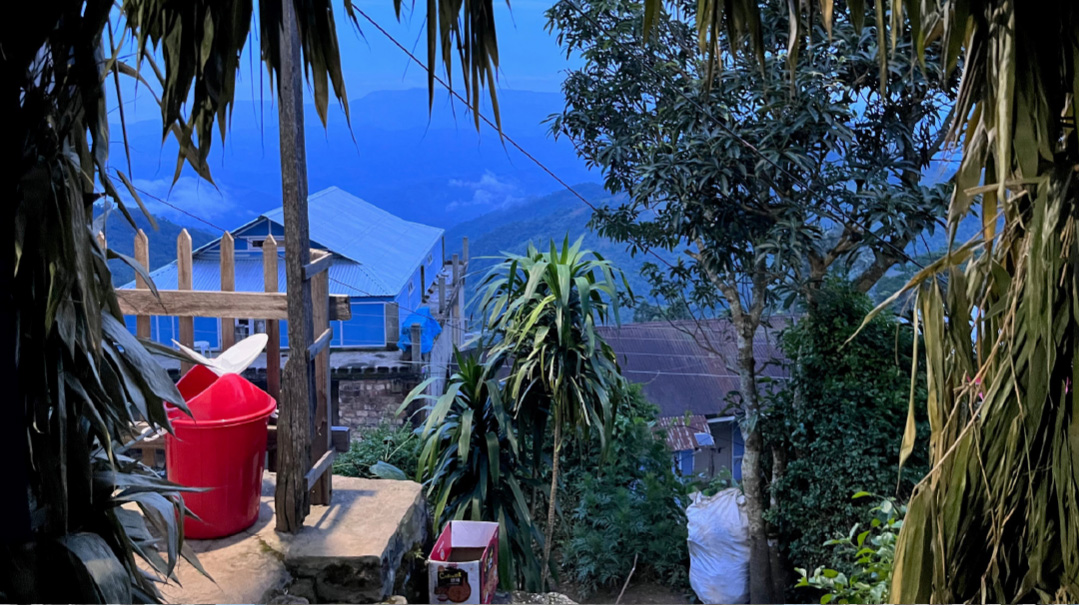
Would She Get the Get?
While I was excited to reconnect with this special community in Mizoram, now I had another priority — to deliver the get I’d been commissioned with. The case is very complicated and quite tragic. The woman had made aliyah from India years ago as part of a group of Bnei Menashe who went through their conversion by the Chief Rabbinate and became Israeli citizens. She was halachically married, lived in a religious community where she raised her children, but ultimately the marriage unraveled. They agreed to divorce, and in the meantime, she returned to India, leaving her son with her husband and taking her daughter with her. Here the story gets a little murkier — somehow, she’d gotten involved with a drug cartel in order to feed herself and her daughter, wound up in an Indian prison, and, as a foreign national, is now looking at a 20-year sentence. (She claims she had nothing to do with drugs, that her neighbors framed her. Why, she says, would a single mom endanger herself and the child who is dependent on her?)
On the way to fulfilling our mission, we drove for seven hours on a single-lane road with hairpin turns through dangerous mountain passes near the Pakistani border, to spend the night with a small Jewish community of Bnei Menashe called Nahar Shalom. We were pretty tired, but they were wide awake, ushering us into the shul in order to hear words of Torah and encouragement. This tiny community of about 20 families — despite their geographic isolation — maintains Orthodox Jewish practices and members daven daily with talleisim and tefillin, hoping one day to travel to Eretz Yisrael and become full-fledged Jews.
Their houses are made from bamboo and are on stilts. After their Maariv service, we sat around the bonfire trying to keep warm and eating roasted corn on the cob. Our accommodations were village-simple: We slept on the floor in a little hut with no hot water or shower.
In the morning, after davening with our hosts, we set off for the jail. Arranging the visit wasn’t easy, and permission was confirmed before we departed Israel, so you can imagine our consternation upon arriving at the prison to discover that it was closed to visitors that day. But a few words to the right person and some dollars surreptitiously slipped into a pocket was all that was needed to bring the woman to the front office of the prison. She was allowed to speak with us through a metal grate, but an officer sat between her and the screen to prevent us from giving her any contraband. We were able to hand her the get, though, and while this woman might have made the most terrible mistake of her life and was now paying the price, we are in touch with people who will try and assist her.
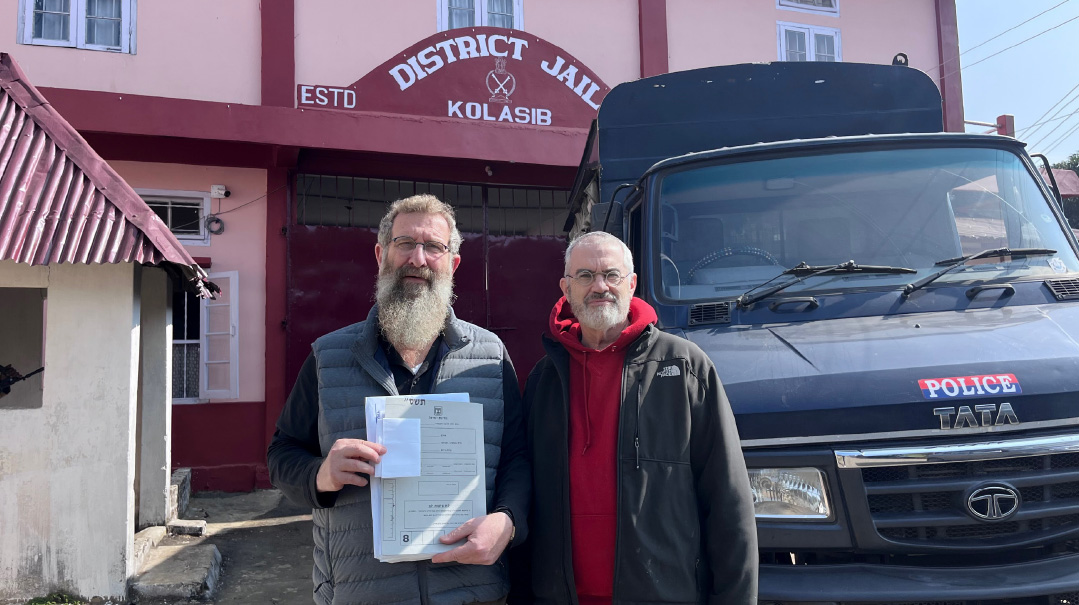
Tribal Refuge
When Ari Z. and I visited Manipur in 2016, we were under military protection — but we didn’t understand the full extent of simmering intertribal feuds and hatred. We were now in Mizoram, a 12-hour drive from Manipur, which is currently in the throes of a tribal war and where the Bnei Menashe, due to their particular ethnicity, are in the middle. Numerous Bnei Menashe have been killed, and some villages together with their shuls have been burnt down. We learned that not far from the prison was a refugee camp holding, among others, 150 Jews. And so on we went, often maneuvering to avoid oncoming traffic on the narrow one-lane winding mountain road with no guardrail and a plunging ravine below, which unfortunately claims many lives every year (although that fact didn’t seem to stop the huge trucks careening around the narrow bends and heart-stopping turns announcing themselves by beeping their horns a split second before coming into view).
The refugee center in a converted school building is home to about 250 Manipurians, both Christians and Bnei Menashe. About 30 sleep in a room, food is available but not plentiful, but potable water isn’t. A fellow named Oholiav, the 40-year-old leader of the community, told me they had no choice but to drink the tap water and many people got sick. He said there is not enough food, about half of what they would normally eat, yet added good-naturedly, “we just put in twice as much water.”
Before we left the town that morning, I filled up the back of our jeep with food and some surprises for the kids. When we gave the stash to Oholiav, he told us he’d have to share it with the Christians in order for them to remain on good terms. He told us that they received some kosher meat from Israel before Rosh Hashanah, but after sharing with their Christian neighbors, there was very little left.
Oholiav has managed to organize his crowd into a genuine community, so important for the men and boys walking around the camp in yarmulkes and the women with covered heads. He set up classes for the study of Torah and halachah, and when word spread that we’d arrived, we soon had about 100 people sitting on the floor around us. We talked about Israel, sang the songs they knew, and shared about their difficulties in keeping a religious lifestyle. Looking around, I noticed a thick piece of bamboo cut the long way which was tied to the bottom of the window. I saw wax and understood that this is where the women light their Shabbos candles.
As we prepared to say farewell, one boy kept eyeing my tzitzis, reminding me of a story I once heard from my patient, Shlomo Carlebach. He’d given a concert in Moscow in 1972, the first Jewish public event in half a century, and afterward people asked for his tzitzis, his tefillin, his yarmulke — any Jewish item he could give them. On his flight from Moscow to Vienna, bereft of his Jewish ritual items, he knew he looked like a goy, but he was thrilled that he’d helped Jews in desperate need of something to cling to. So before we left the refugee camp, I pulled off my tzitzis and gave them to the boy, thinking of the Jews behind the Iron Curtain decades back.
Driving on to the next village, we were amazed to see a young man with a yarmulke walking on the side of the road. He told us he was part of the Bnei Menashe and came from the refugee camp to town to buy some medicines. We didn’t not have room to take him back to the camp, so we paid for a tuk-tuk, (a small motorized rickshaw) to drive him home many miles away.
This wasn’t my first visit to the villages of the Bnei Menashe, but seeing them in their native, far-flung hamlets forced me to take stock of my own Yiddishkeit. Whether or not they can prove a genetic link to Yaakov Avinu, what is clear is their devotion to Hashem, Torah, authentic Judaism, and their acceptance of mitzvos despite the hardships it entails. They walk around the remote backwaters of India in yarmulkes and tzitzis, learn and practice Torah in their isolated villages, daven three times a day and keep halachah to the best of their ability — and they haven’t even converted yet. Perhaps it can be a springboard for me to improve my own actions. Couldn’t we all use a little improvement?
Postscript:
Upon returning to Israel, we had to go to the the rabbinical court to give testimony that the get had indeed been given to the woman, in order for her former husband to remarry — which he did, just last week. The next day, the mesader kiddushin wrote us a message: “Thank you for all of your help. There is no doubt that without your help they could not have stood under the chuppah last night. Go from strength to strength wherever your travel itinerary ends up taking you.”
(Originally featured in Mishpacha, Issue 1005)
Oops! We could not locate your form.

